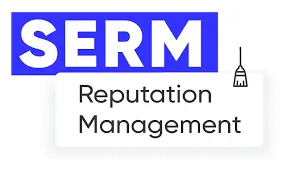A key element of successful promotion in the online world in 2024 is a comprehensive SEO website audit. In today's dynamic search engine environment, requirements are constantly evolving, and therefore the approach to the audit must be more comprehensive.
In 2024, in addition to technical aspects, user experience, content quality, and overall online reputation of the site will become important. An SEO audit should include an analysis of factors such as user experience metrics, page loading speed, content relevance, as well as an assessment of online reputation and an overview of the competitive landscape.
With search engine algorithms constantly changing, the focus on quality user experience is becoming more prevalent. As a result of the audit, in addition to technical recommendations, site owners will be provided with a strategic plan covering both technical and content and marketing aspects for SEO website optimization in accordance with the requirements of 2024.

Why a Comprehensive SEO Audit is Important
The goal of website promotion is not limited to simply attracting traffic. The main task is monetization, receiving applications and increasing profits. The visitor, not finding satisfactory conditions, leaves, which reduces positions due to behavioral factors. A comprehensive SEO audit covers all aspects, creating a comprehensive plan for improving the site, maximizing results and ensuring sustainability in the online environment.
It should not be forgotten that the audit itself, despite its importance, will not change anything by itself. The results require real changes, and the implementation of these changes may require additional costs. An audit is necessary for developing an action plan, distributing responsibilities and work. As a result, a comprehensive audit can form a plan for a period of 3 to 10 months, including the work of developers, marketers, copywriters and other specialists.
What checks are included in a comprehensive SEO audit of a website? This process includes a wide range of checks, ranging from technical aspects to usability. However, specific audit elements may vary depending on the type of site. For example, for a news portal with high traffic, finding growth points is more important than a technical audit. While a young site with growing traffic may face limitations in revealing its potential due to technical issues.
In 2024, a general website audit is a complex mechanism consisting of 10 key components covering various aspects of web resource optimization and functionality.
1. Internal or technical audit
The technical base of the site plays a fundamental role in its promotion. As part of this audit, scanning and indexing settings, the availability of all important pages for search robots, as well as the correctness of URL formation, the use of micro-markup and other technical aspects that affect the effectiveness of interaction with search engines are checked.
При детальной проверке технического аспекта сайта также уделяется внимание уязвимостям, связанным с дублированием контента или проблемами, связанными с rel=»canonical». Важным этапом аудита является формирование карт сайта, обеспечивающих корректное индексирование страниц поисковыми роботами.
2. Website performance audit
In light of Google's announcement to include page speed metrics in ranking factors, it is important to conduct a site speed audit. Various page speed metrics are assessed, with an emphasis on Core factors such as LCP, FID, CLS, and INP. The result provides recommendations for improving key page speed metrics.
Explanation:
LCP (Largest Contentful Paint)
Definition: The speed at which the main content of a page loads.
Importance: Ahead of other elements on the page, LCP measures the time it takes for the most important content to fully load.
Recommendations: The auditor provides actionable recommendations to reduce loading time for key content.
FID (First Input Delay)
Definition: Interaction latency.
Importance: Measures the time elapsed from a user's first interaction with a site until the site's response to that interaction.
Recommendations: Provides recommendations to reduce interaction latency, thereby improving user experience.
CLS (Cumulative Layout Shift)
Definition: The total displacement of the layout.
Importance: Measures the degree to which the page layout changes during loading, which affects the stability of the interface.
Recommendations: Provides actionable strategies to reduce overall layout drift for a more consistent user experience.
INP (Interaction to Next Paint)
Definition: Delay in interaction.
Significance: Measures the time elapsed from the moment a user interacts with a site until the next page repaint.
Recommendations: Audits provide recommendations to reduce interaction latency by improving the transition between user interactions and page content refreshes.
3. Content audit
Подтверждая важность принципа «Content is king», аудит контента становится критическим этапом в оценке эффективности веб-ресурса. На этом этапе проводится тщательная проверка оптимизации метатегов, структуры текстов, а также соответствия контента намерениям пользователей. Важно отметить, что анализируется не только наличие ключевых слов, но и их органичное вплетение в контекст страницы.
Particular attention is paid to the relevance of high-traffic pages to ensure that the information is relevant to visitors' needs. The results of the content audit provide specific recommendations for optimizing existing material, as well as formulating strategies for creating new content based on audience needs.
Content audit is aimed at improving the quality and relevance of materials, which in turn helps improve the site's position in search results and attract the target audience. In addition, regular content updates and optimization help the site maintain high search visibility and remain relevant to users, thereby strengthening its position in the market.
4. External Links Audit
This stage involves not only analyzing the mosaic landscape of external links from various sources, but also taking a deeper look at their role in creating the overall context. Not only the quality of the links themselves is assessed, but also the context they create in the virtual space.
An important element of external link auditing is also the analysis of lost links, such as links to deleted pages or broken redirects. This allows you to understand which potentially valuable resources have been lost and how they can be restored or replaced.

The result of the analysis is the formation of a detailed dashboard that provides an overview of the entire landscape of external links. This dashboard not only displays the current state of affairs, but also provides strategic recommendations for managing external links. This approach allows you to optimize the strategy for building a website's link profile, strengthen its authority in the eyes of search engines and increase the overall effectiveness of SEO promotion.
5. On-Page audit
Since users visit specific pages most often, landing pages are audited. The correctness of the structure and content is assessed to ensure that each page is as effective as possible.
On-page audit includes
Checking the structure of headings;
Checking for the presence of technical headings;
Page code analysis;
Optimization of images on the page;
Detection of unnecessary elements and other aspects.
6. Competitor Audit: Content and Links
This stage evaluates your competitors' strategies in two aspects: content and external links. The content audit checks
- Texts;
- Assortment;
- Inter-page links;
- SEO structure and other criteria.
External link audit includes
- Collecting data on external links from competitors;
- Analysis of the dynamics of changes;
- Studying the pages that are linked to;
- Anchor text analysis;
- Creating a comparison table.
Result: Creation of a comparative table that clearly demonstrates the differences in link strategy, as well as the creation of an action plan to strengthen the link mass of your resource.
7. Online Reputation Audit (SERM Audit)
Customer trust directly impacts your sales, so it’s important to monitor your brand’s discussions and ratings on various online platforms.
SERM audit includes
- Highlighting important brand queries;
- Sentiment analysis of reviews;
- Setting up monitoring of reviews about your business.
Result: Providing recommendations on review management, improving search results, and creating a strategy to reduce negative reviews at the top of search results.

8. Usability Analysis
A website usability audit aims to identify barriers that prevent users from performing targeted actions, such as transactions, submitting requests, or searching for content.
Usability audit includes
- Visualization of the user's path through the site;
- Analysis of user behavior using services such as Clarity, Hotjar;
- Research of heat maps and scroll maps;
- QA testing of basic user actions and other aspects.
Result: Compilation of a list of identified problems with proposals for their solution and formulation of hypotheses for A/B testing.
9. Data Analysis
Tools like Google Search Console contain a wealth of valuable data about your site. This analysis is aimed at extracting useful actionable insights.
A data analytics audit may include
- Finding the best types of content to increase traffic or conversions;
- Analysis of pages that have lost traffic;
- Exploring missing semantics.
Result: Recommendations for creating, updating or supplementing content.
10. Finding growth points
The main objective of this review is to find new growth strategies. This analysis is not possible without preliminary stages, which is why it is carried out last.
Analysis of possible growth points includes
- Find unused content types;
- Analysis of competitors' performance;
- Research of the internal potential of the site;
- Analysis of keyword potential and other aspects.
Result: Traffic forecasting and suggestions for creating new types of content or optimizing existing ones.
Необходим ли вам комплексный SEO-аудит? Если вы ищете магическую пилюлю или кнопку «сделать хорошо», то, вероятно, нет. Аудит сам по себе не изменит ситуацию. Однако, если ваша цель — увеличение органического трафика, масштабирование и готовность вложить усилия в улучшение сайта и бизнеса, то, несомненно, да. Тем не менее, перед вами стоит трудная работа, требующая времени и ресурсов.
SEO website audit is a systematic study of a resource in order to meet the requirements of search engines and develop recommendations for improving promotion.
The result of the audit should be a clear file with recommendations and requirements for improving the site.
SEO audit includes many stages, such as technical audit, site performance audit, content audit, external link analysis, on-page audit, competitor audit, online reputation audit, usability audit, analytics check, existing data audit, EEAT audit, commercial factors study, and finding growth points.
The audit itself will not change the situation, but it will provide a work plan for 3-10 months, the result of which will be an improvement in the site ranking and an increase in conversion.








